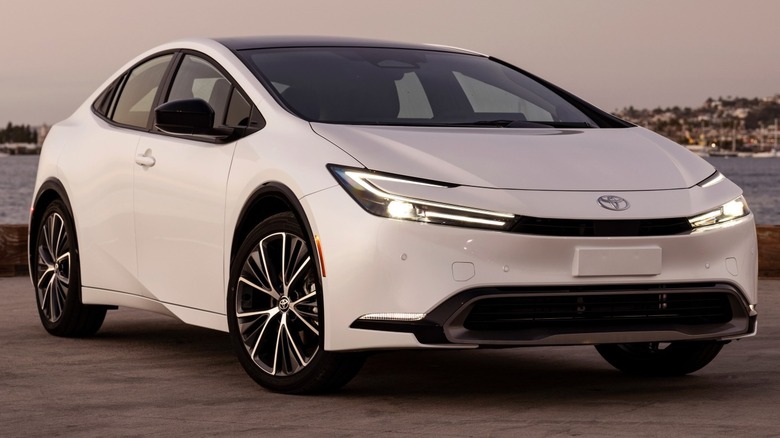
When shopping for a dependable and fuel-efficient compact car, you might be considering both the Toyota Prius and the newly christened Prius Plug-in Hybrid (formerly known as the Prius Prime). These models provide ample comfort for up to five passengers, feature thoughtful interior touches, come equipped with an extensive array of safety technologies, boast impressive mileage figures, and share similar handling characteristics. However, these vehicles do have distinct differences; notably, the regular Prius operates as a parallel hybrid, while the Prius Plug-in Hybrid can also recharge via plugging into an electrical outlet.
It all began with the Prius. This compact vehicle made its debut in October 1997, marking it as the first mass-produced automobile equipped with a hybrid powertrain. Production of this initial version continued up until 2003 before being succeeded by the second iteration of the Prius series, which held sway until 2009. That year saw the introduction of the third-generation Prius from Toyota. Then, three years down the line in 2012, the first-series Prius plug-in hit the market under the moniker “Toyota Prius Plug-in Hybrid.” When the updated second-gen model came out in time for 2017, it was retitled as the Toyota Prius Prime.
For the 2025 model — which is part of The third generation that started in 2023 -- Toyota has removed the "Prime" designation and reverted to using the "Prius Plug-in Hybrid" title. Additionally, the current model of the Toyota Prius is now in its fifth generation since being launched in 2023. Below is a comparative analysis covering aspects such as size, performance metrics, internal amenities, technological specifications, and pricing details.
Read more: 10 of the Most Durable Toyota Engines Ever Produced, Ranked
How Does a Parallel Hybrid Differ From a Plug-In Hybrid?
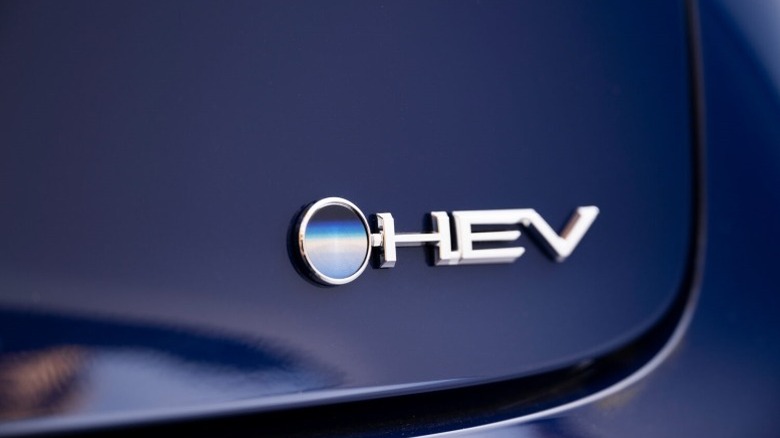
The main distinction between a parallel hybrid and a plug-in hybrid vehicle lies in their battery capacity and methods of recharge. In essence, both types utilize an internal combustion engine alongside a compact battery pack and electric motor within what’s known as a parallel or self-charging hybrid setup. This configuration harnesses energy through regenerative braking to store electrical power back into the battery. Consequently, models like the Toyota Prius can function akin to pure electric vehicles when driving slowly, relying solely on battery propulsion over brief stretches.
In a parallel hybrid automobile, the gasoline engine collaborates with the electric motor during acceleration and functions separately from the electric motors when needed. Unlike regular parallel hybrids, which do not require plugging in for charging, plug-in hybrid cars are built to be charged using a power outlet just as purely electric vehicles are. Both types feature an internal combustion engine, an electric motor, and a battery pack; however, since they have stronger electric motors and typically bigger batteries compared to their conventional counterparts, plug-in hybrid automobiles can operate solely on electrical power over longer distances.
The Toyota Prius and the Prius Plug-In Hybrid both utilize the same Toyota GA-C platform.
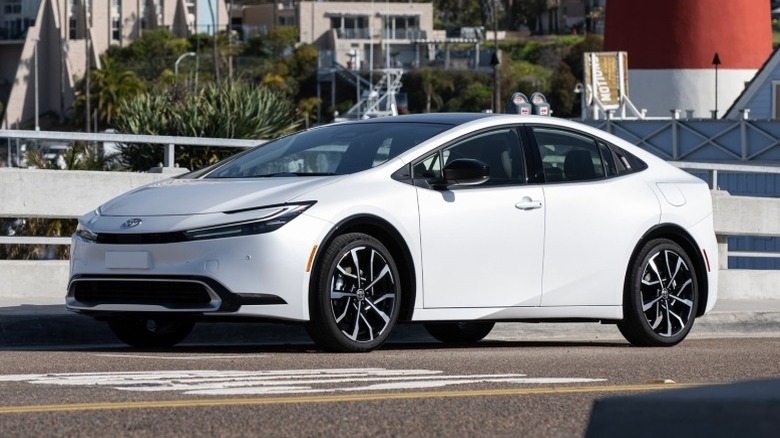
The present Toyota Prius Plug-in Hybrid Both the standard Prius and Toyota’s other compact cars, such as the Corolla, share the same GA-C unibody architecture. This platform is utilized across various models within the brand’s lineup of compact vehicles. GR Corolla turbo hatchback The Corolla Cross and the Lexus UX are both included, along with their shared features of an independent MacPherson strut suspension equipped with anti-roll bars at the front, and a multi-link rear suspension fitted with anti-roll bars as well.
The resemblances also apply to their sizes, as both vehicles have identical measurements: they feature a 108.3-inch wheelbase and measure 181.1 inches long and 55.9 inches tall in their basic configurations—the LE version of the Prius and the SE variant of the Prius Plug-in Hybrid. However, there’s a slight difference when it comes to width; the standard Prius is one-tenth of an inch broader at 70.2 inches wide versus the Prius Plug-in Hybrid which spans 70.1 inches.
Apart from the basic versions, both the Prius and Prius Plug-in Hybrid maintain consistent external measurements for all superior trim levels: an overall length of 181.1 inches, a width of 70.2 inches, and a height of 56.3 inches. In terms of ground clearance, the standard editions offer 5.6 inches, whereas the advanced models provide 6.0 inches.
The Regular Prius Offers Greater Luggage Capacity Even When All Seating Positions Are Occupied.
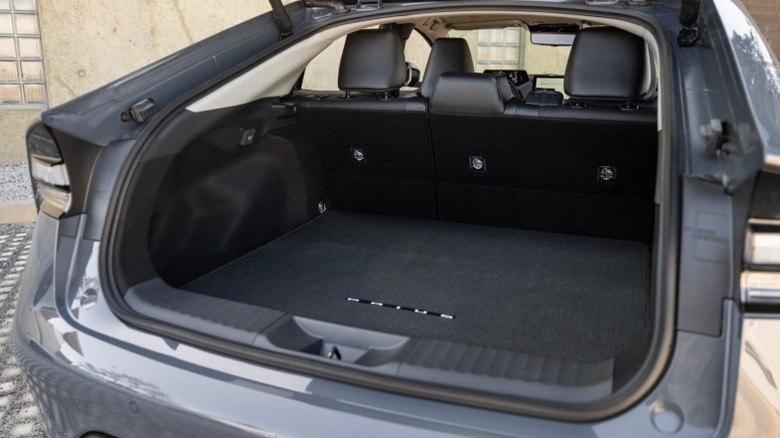
In the lineup of hybrid vehicles, the Prius stands out with the largest cargo area. Specifically, in the basic LE configuration, it provides an impressive 23.8 cubic feet for storage purposes, all while maintaining ample seating space for passengers. This represents a significant advantage over other versions like the XLE, Nightshade Edition, and Limited models, each offering only 20.3 cubic feet of trunk volume. Interestingly, this figure matches exactly what you get from the Plug-in Hybrid variant regardless of whether you choose the SE, XSE, or XSE Premium trim levels.
Inside the cabin, the regular Prius provides 0.8 inches more front-seat legroom compared to the Plug-in Hybrid’s 42.4 inches. However, the Plug-in Hybrid compensates by offering greater backseat legroom — 35.9 inches against the regular Prius's 34.8 inches. When it comes to headroom, both models offer 38 inches upfront and 36.4 inches at the rear, except for the Plug-in Hybrid's XSE Premium trim, which has 37.5 inches of headroom in the front.
The Plug-in Hybrid Offers Greater Power Compared to the Regular Prius
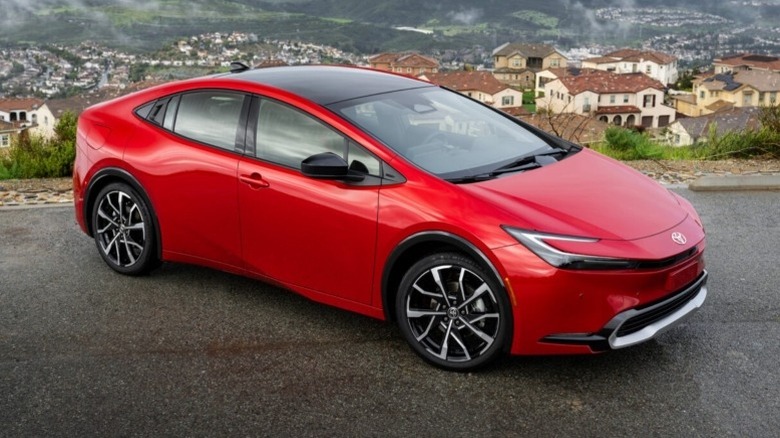
Although both the Prius and Prius Plug-in Hybrid feature a 2.0-liter four-cylinder petrol engine, the latter outperforms the former because of its bigger battery pack and stronger electric motors. The Plug-in Hybrid’s internal combustion engine works alongside two electric motors and a 13.6-kWh lithium-ion battery, producing a combined output of 220 horsepower and 139 lb-ft of torque sent to the front wheels through a continuously variable transmission system. On its own, the gasoline engine generates 160 hp, indicating that the electric motors contribute an additional 60 hp.
In Car and Driver During performance testing, the Plug-in achieved a zero-to-60 mph acceleration of 6.7 seconds using both the gasoline and electric motors — one second longer than Toyota’s estimated 6.6-second mark. Relying solely on electric power extends this time to 11.2 seconds. With a full charge, the Plug-in's battery supports up to 44 miles of all-electric driving before engaging the gasoline engine.
For a front-wheel-drive Prius, Car and Driver cited the zero-to-60 mph acceleration at 7.1 seconds, thanks to the combination of a 2.0-liter four-cylinder engine and an electric motor producing a combined output of 194 horsepower and 139 lb-ft of torque. In all-wheel-drive versions of the Prius, this powertrain increases to 196 horsepower using the same 2.0-liter four-cylinder engine but with dual electric motors instead. Therefore, although it might lack some punch compared to its brother, the regular Toyota Prius offers something extra: an optional AWD setup, whereas the Plug-in variant remains strictly front-wheel drive.
The Prius is more efficient than the plug-in as a traditional hybrid.
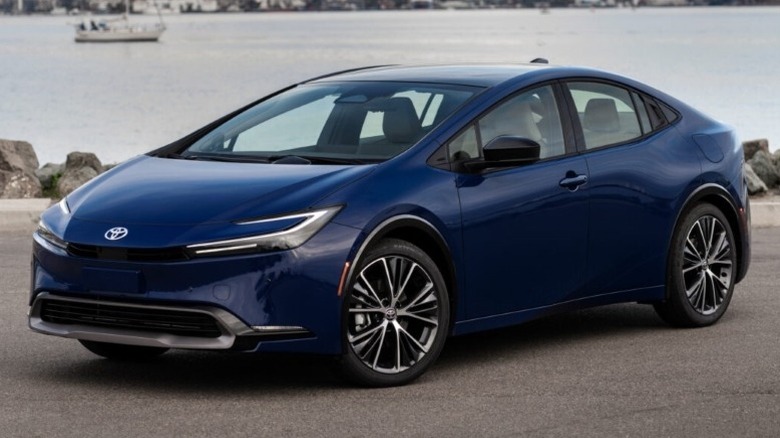
The regular Prius provides superior fuel efficiency compared to the Plug-in model at 57 mpg combined for city and highway driving. For the entry-level Prius LE with front-wheel drive, this figure holds true. However, models equipped with all-wheel drive offer slightly lower efficiency at 54 mpg combined. Should you choose a higher-tier version like the Prius XLE, Limited, or Nightshade Edition with front-wheel drive, the estimated combined mileage drops to 52 mpg. On the other hand, these premium versions with all-wheel drive have been certified by the Environmental Protection Agency (EPA) to achieve 49 mpg combined.
This indicates that the Prius LE is more efficient compared to the standard Plug-in SE, which has an estimated combined mileage of 52 mpg. In contrast, the Plug-in Hybrid XSE and XSE Premium versions achieve merely 48 mpg solely from gasoline. Nevertheless, the overall fuel efficiency advantage leans towards the Plug-in Hybrid model due to its extended all-electric driving capability of up to 44 miles, thanks to its bigger battery capacity. Operating purely on electricity, the Plug-in SE boasts an impressive equivalency of 127 MPGe, whereas both the XSE and XSE Premium variants score slightly lower at 114 MPGe.
Since the Plug-in Hybrid is exactly what its name suggests, you have the option to connect it for charging via an external power source like your household’s 120-volt socket or a public charging point. In contrast, the standard Prius charges itself exclusively using either the gasoline engine or regenerative braking — capabilities both of which are shared with the Prius Plug-in Hybrid.
The Prius Plug-In Hybrid Comes with a Few Additional Standard Interior Amenities
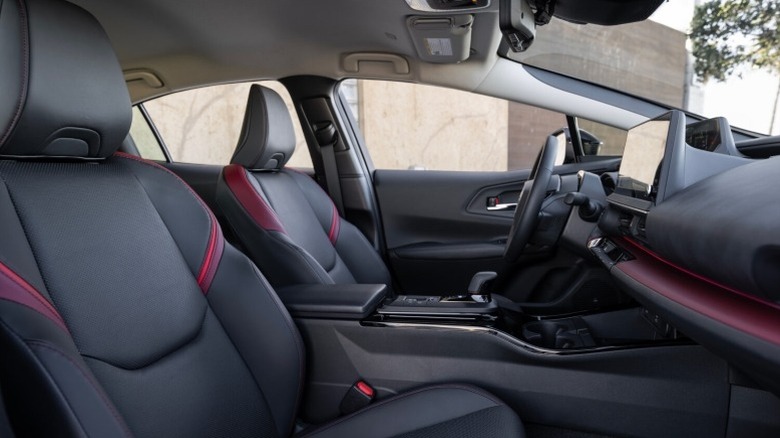
Both the Prius Plug-in Hybrid and the regular Prius come adequately outfitted in their basic trim levels. Nonetheless, the Plug-in version provides an additional touch of luxury. Specifically, the Plug-in Hybrid SE includes amenities such as a climate control system with pollen filter, push-button start, a heated steering wheel, cloth-upholstered seats, six-way manual front seat adjustment, and 60/40 split folding rear seats. In contrast, the Prius LE shares several similar features but lacks certain upgrades like the heated steering wheel found in the Plug-in model.
From a technology standpoint, both the plug-in hybrid and conventional Prius models feature an 8-inch touch screen for their infotainment systems, along with a digital instrument panel, support for wireless Apple CarPlay and Android Auto, a built-in Wi-Fi hot spot, six USB-C charging ports, and a six-speaker sound system. In terms of safety features, each vehicle includes Toyota’s SafetySense 3.0 suite as standard equipment. This comprehensive package encompasses forward collision alert, automated emergency braking with pedestrian identification capabilities, adaptive cruise control, lane departure warnings, lane-keeping assistance, and road sign recognition functionalities, amongst others.
The Prius Plug-In Hybrid is priced at $5,025 more than the regular Toyota Prius.
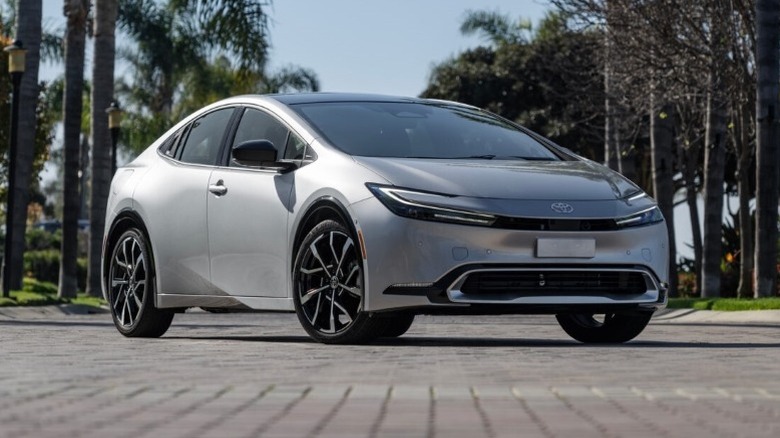
The suggested retail price for the 2025 Toyota Plug-in Hybrid starts at $33,375 for the basic SE model. This amount represents an increase of $5,025 compared to the standard Prius LE with a base cost of $28,350. Should you opt for the Prius LE AWD instead, the additional expense would drop to $3,625 due to its initial pricing at $29,750. Moving up to the upper-tier Plug-in XSE variant increases the price tag to $36,625; this figure stands as $4,830 above the non-awd version of the Prius XLE priced at $31,795 or just over $3,430 past the awd Prius XLE that commences at $33,195.
If you're aiming for the high end of Toyota’s lineup of hybrid vehicles, be prepared to dig deep into your wallet. The priciest model, the Prius Plug-in Hybrid XSE Premium, comes with a hefty price tag of $40,070. This means opting for this version will set you back $7,510 compared to getting a front-wheel drive Prius Nightshade Edition or $6,110 more than acquiring the all-wheel drive variant priced at $33,960. Additionally, when comparing prices within the series, the base price of the Plug-in XSE Premium exceeds that of the highest-tier Prius Limited FWD—which starts at $35,365—by $4,705; similarly, it surpasses the starting point of the Limited AWD trim level ($36,765) by $3,305.
Toyota Prius or Prius Plug-In Hybrid: Which One Should You Choose?
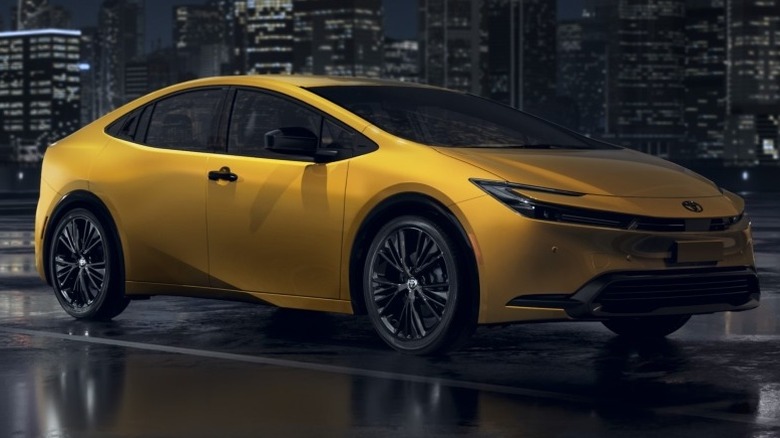
The head-turning Toyota Prius Both the Hyundai Ioniq 5 and the Toyota Prius Plug-in Hybrid offer impressive hybrid technology with ample features, excellent fuel efficiency, and comfortable interiors. Nonetheless, when considering overall value, the Toyota Prius stands out due to its lower base cost and superior storage capacity. For those who often face adverse weather conditions such as rain, mud, or snow, the conventional Prius has an advantage because it offers optional all-wheel drive—an option not available in the Plug-in Hybrid model. This feature ensures better grip and stability under tough driving circumstances where a front-wheel-drive car could struggle.
Despite this, the Prius Plug-in Hybrid has an advantage when it comes to performance and overall fuel efficiency over time. With 220 horsepower—24 horses more than the strongest version of the standard Prius—it outperforms its sibling. Given that the typical American driver travels around 37 miles per day, the Prius Plug-in Hybrid’s 44-mile all-electric range might cover your daily driving needs sufficiently, leading to potential savings on fuel costs. Regardless, we highly recommend taking both hybrid models for a test drive to determine which one suits your requirements best.
Interested in keeping up with the newest technology and automotive developments? Sign up for our complimentary e-newsletter. For the most recent news stories, detailed guides, and step-by-step advice, delivered once per email.
Read the original article on solusikaki.com .
